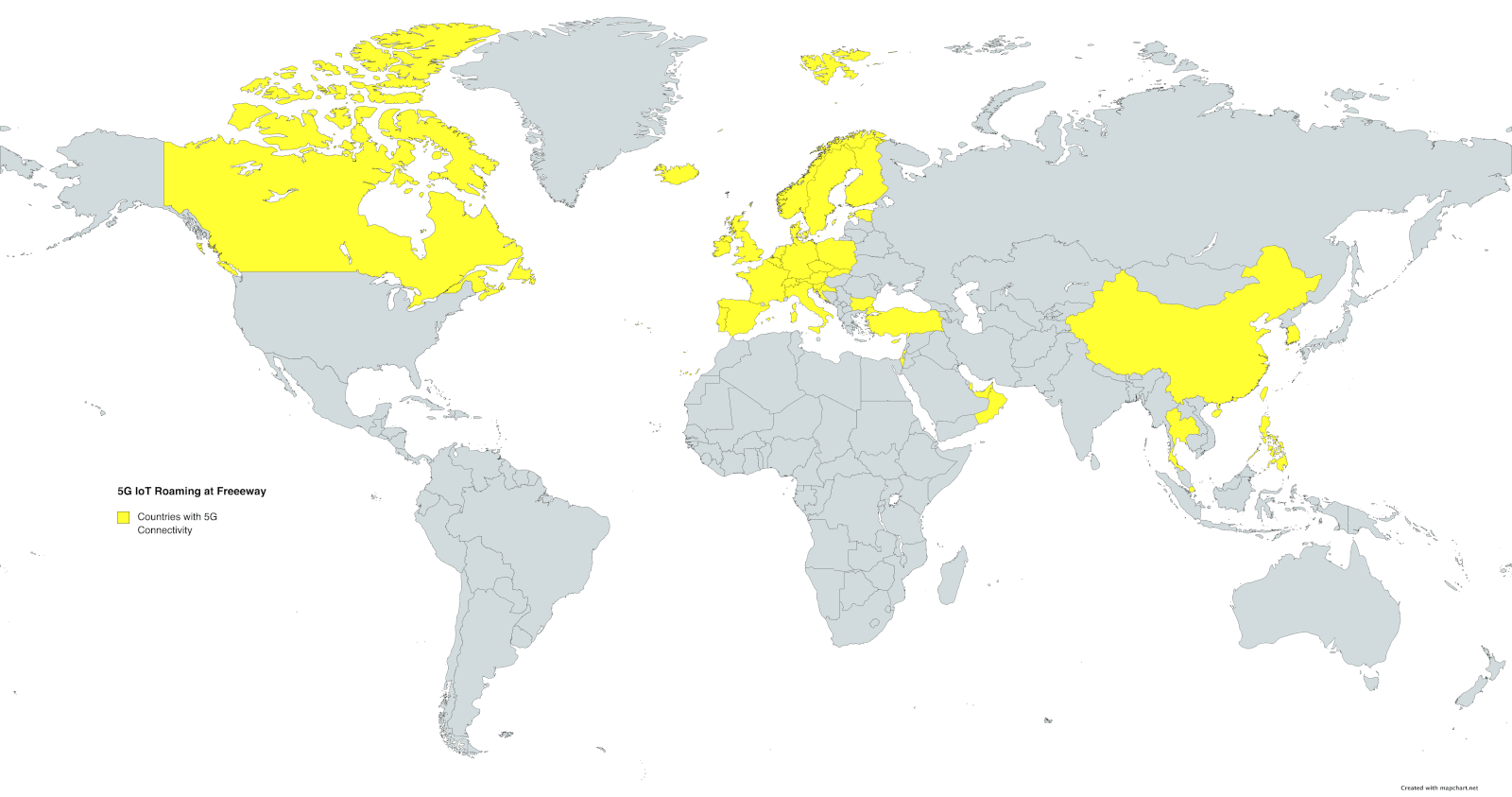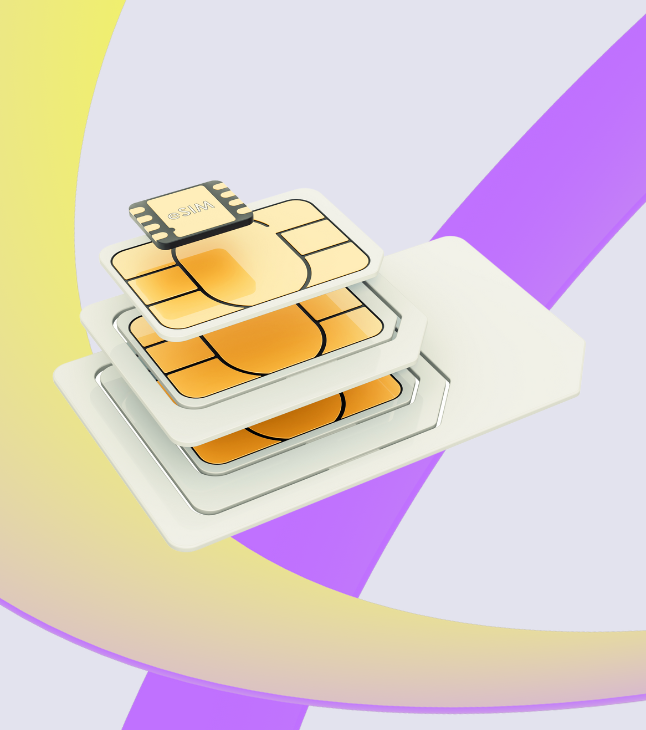We at freeeway have been preparing for the upcoming 2G and 3G sunsets. In this blog post, we will show what to expect and which technologies are a good alternative to 2G and 3G.
2G and 3G networks had been essential for many freeeway customers over the last years, especially for IoT and M2M devices for asset tracking. Consequently, more and more customers need to face the technical challenge to continuously provide global connectivity despite the sunsetting of 2G and 3G networks. The question arises:
The Impact of the Sunset on Businesses: What You Need to Know
2G & 3G technologies were fundamental at one point to establish the minimum required infrastructure for IoT infrastructures globally. However, we are now witnessing a transformation to the latest technologies, such as 4G and 5G. This upgrade requires mobile network operators to free their existing 2G and 3G resources.
However, this transition requires businesses to be prepared for the absence of 2G and 3G networks. Awareness about 2G & 3G sunset and a strategy for technological advancement can ensure a smooth transition for businesses.
Preparing for the Sunset: Strategies and Best Practices
The primary thing to prepare for the sunset of 2G and 3G is to understand and verify if and how you can transition to technologies such as 4G and 5G. Here are some of the things you can evaluate to understand your readiness for 2G & 3G sunset:
- Does your IoT deployment support the latest connectivity technologies?
- What is the availability of alternative network connectivity?
- What does the pricing look like for your IoT solutions to transition?
- The best cellular carriers to choose for your IoT upgrade
- How do you plan to transition to the latest technologies without interfering with existing internet-connected devices?
The Role of IoT Devices in the Sunset of 2G and 3G Networks
For a business to transition from 2G and 3G to the latest network requires support from their IoT deployments. It is important to check if your device can register and operate on frequency bands for LTE, 4G, or 5G networks. With hardware and firmware limitations in mind, you should consult with your original design manufacturer (ODM) to understand if your IoT solutions can support the latest cellular connectivity.
In case, IoT devices do not support the latest technologies, such as 4G or 5G, you might even have to consider an entire rollover of your IoT solution. It might be a large-scale exercise, and as such, your IoT devices play a key role in 2G and 3G network sunset.
Understanding the Sunset Timeline: When Will 2G and 3G Networks Be Phased Out?
2G & 3G Shutdown
To free up resources for the upcoming 5G enrollment, networks all over the globe have recently announced their planned 2G and 3G shutdowns as listed below:
America:
| Country | Operator | 2G | 3G |
|---|---|---|---|
| Canada | Rogers | Phase out Q4 2021 | Phase out 2025 |
| Mexico | Movistar (Telefonica) | Phase out 2021 | |
| USA | AT&T | Phase out Q1 2022 |
Asia:
| Country | Operator | 2G | 3G |
|---|---|---|---|
| Bangladesh | Grameenphone | Phase out Q4 2025 | Phase out Q4 2026 |
| Cambodia | Smart Cambodia | Phase out Q4 2021 | |
| China | China Unicom | Phase out Q4 2021 | |
| India | Bharti Airtel | Phase out Q4 2023 | |
| Indonesia | XL Excelcom | Phase out Q4 2022 | |
| Japan | KDDI | Phase out 2026 | |
| NTT DoCoMo | Phase out 2026 | ||
| Malaysia | Digi | Phase out Q4 2024 | |
| Myanmar | Telenor | Phase out Q4 2024 | Phase out 2025 |
| Pakistan | Telenor | Phase out 2025 | Phase out 2023 |
| Saudi Arabia | Saudi Telecom (Al Jawal) | Phase out 2022 | Phase out 2022 |
| Mobily | Phase out 2022 | ||
| ZAIN | Phase out 2022 | ||
| Singapore | M1 | Phase out 2025 | |
| Singtel | Phase out 2025 | ||
| Starhub | Phase out 2025 | ||
| Thailand | DTAC TriNet | Phase out Q4 2025 | |
| United Arab Emirates | DU Emirates | Phase out Q3 2022 | |
| Etisalat UAE | Phase out Q3 2022 | ||
| Vietnam | Beeline Vietnam (Gtel) | Phase out 2022 | |
| Vietnamobile | Phase out 2022 | ||
| Viettel | Phase out 2022 |
Europe:
| Country | Operator | 2G | 3G |
|---|---|---|---|
| Austria | A1 | Phase out Q4 2025 | |
| Bulgaria | A1 | Phase out Q4 2025 | |
| Croatia | T-Mobile | Phase out Q4 2022 | |
| Czech Republic | O2 (Telefonica) | Phase out Q4 2021 | |
| T-Mobile | Phase out Q4 2025 | Phase out Q4 2021 | |
| Denmark | Telenor | Phase out Q4 2025 | Phase out Q3 2022 |
| Telia | Phase out Q4 2025 | Phase out Q2 2021 | |
| Estonia | TeliaSonera | Phase out Q4 2025 | Phase out Q4 2025 |
| Finland | DNA | Phase out Q4 2025 | Phase out Q4 2023 |
| Elisa (Radiolinja) | Phase out Q4 2023 | ||
| TeliaSonera | Phase out Q4 2025 | Phase out Q4 2025 | |
| Germany | O2 (Telefonica) | Phase out Q4 2022 | |
| Greece | Vodafone | Phase out Q4 2022 | |
| Ireland | Hutchison 3G | Phase out Q1 2023 | |
| O2 (Telefonica) | Phase out 2025 | Phase out Q1 2023 | |
| Vodafone | Phase out 2025 | ||
| Latvia | LMT (Telia) | Phase out 2022 | |
| Lithuania | Telia (Omnitel) | Phase out 2025 | Phase out Q4 2022 |
| Luxembourg | POST | Phase out Q2 2022 | |
| Malta | EPIC | Phase out 2025 | |
| Montenegro | M-Tel | Phase out 2025 | |
| Netherlands | KPN | Phase out Q1 2022 | |
| Norway | Com4 | Phase out 2025 | |
| Telenor | Phase out 2025 | ||
| Poland | T-Mobile | Phase out 2024-2025 | |
| Portugal | Vodafone (Telecel) | Phase out 2025 | Phase out Q1 2022 |
| Romania | Vodafone (MobiFon) | Phase out 2025 | |
| Spain | Telefonica | Phase out 2025 | |
| Vodafone | Phase out 2025 | ||
| Sweden | Tele2 | Phase out Q4 2025 | Phase out Q4 2025 |
| Telenor | Phase out Q4 2025 | Phase out Q4 2025 | |
| Telia | Phase out Q4 2025 | Phase out Q4 2025 | |
| Switzerland | Sunrise | Phase out Q4 2022 | Phase out 2024 |
| United Kingdom | EE | Phase out Q4 2025 | Phase out 2022 |
| Vodafone | Phase out Q4 2022 |
Oceania:
| Country | Operator | 2G | 3G |
|---|---|---|---|
| New Zealand | Vodafone | Phase out 2025 |
Even though certain countries will keep their 2G and 3G networks, these planned shutdowns will significantly impact IoT companies offering connectivity on a global scale – especially if no further device development is considered. More and more devices are switching modules using alternative technologies such as 4G, LTE-M, and | or NB IoT. But why are those technologies a good alternative?
LTE-M, NB IoT, 4G, 5G & LTE
In most cases, IoT devices relying on 2G and 3G aim for the ability to
- lower costs regarding hardware
- better indoor coverage
- reduced consumption
- and hence longer battery lifetime
LTE-M (LTE CAT M1): provides higher bandwidth and data rates than NB IoT but assures a longer battery lifetime and better indoor penetration than 4G | LTE
freeeway use cases: Pet Tracking | Time Keeping for Racing | Fleet Tracking | Digital Pest Control | Smart Waste Management
NB-IoT: is the preferred choice for cost-sensitive applications with a very low data consumption
freeeway use cases: Pet Tracking | Parking Sensors | Condition Monitoring | Smart Metering
Both technologies are considered to be the major alternative to 2G and 3G networks.
4G / LTE: can be used for high-performance devices characterized by high data consumption and very low latency
The Benefits of Moving to 5G: Improved Speeds, Capacity, and Functionality
5G is the future of network connectivity, and the difference between 5G and its predecessor is remarkable. If you are considering a transition, you must consider the longevity of your solution and consider shifting to 5G network technology.
Here are some of the advantages of 5G:
- Massive speed of data exchange compared to 4G, 3G, and 2G (up to 20 Gigabits-per-second (Gbps))
- Far lower latency, 5G has the lowest latency of 5ms
- 5G has a much better capacity with 100 times higher cell density than 4G
- 5G also offers to decrease power consumption and extend battery life for IoT deployments
Freeeway IoT connectivity offer
While many local networks have already launched their LTE-M or NB IoT networks in their domestic markets, very few mobile network operators have their roaming agreements in place to provide regional or global coverage. Through freeeway’s ability to seamlessly manage IoT connectivity from different network partners, we enable our global clients to benefit from the combination of their roaming capabilities and access to their LTE-M and NB IoT networks.
LTE-M in Europe:
- Belgium (Orange Belgium)
- Canada (Telus Communication)
- France (Orange France)
- Germany (T-Mobile)
- The Netherlands (KPN, Vodafone, T-Mobile)
- Norway (Telenor Norge AS)
- Switzerland (Swisscom Ltd)
LTE-M outside Europe:
- Japan (NTT DoCoMo)
- New Zealand (Telecom New Zealand Ltd RB)
- Taiwan (Chunghwa Telecom)
- USA (AT&T Mobility)
- Australia (Telstra)
NB IoT in Europe:
- Belgium (Orange Belgium)
- Czech Republic (T-Mobile Czech Republic a.s.)
- Germany (T-Mobile)
- Hungary (Magyar Telekom)
- Italy (Vodafone Omnitel N.V.)
- The Netherlands (T-Mobile NL)
- Poland (T-Mobile Polska)
- Slovakia (Slovak Telekom, as)
- Spain (Vodafone Espana S.A.U.)
- Switzerland (Swisscom Ltd)
NB IoT outside Europe:
- USA (T-Mobile USA)
Get Free IoT SIM cards to test
Despite the planned sunsets of 2G and 3G networks, we at Freeeway believe that the shutdowns can be seen as the next step of improving the hardware and optimize IoT connectivity in the next evolution phase.
Your form entry has been saved and a unique link has been created which you can access to resume this form.
Enter your email address to receive the link via email. Alternatively, you can copy and save the link below.
Please note, this link should not be shared and will expire in 30 days, afterwards your form entry will be deleted.




